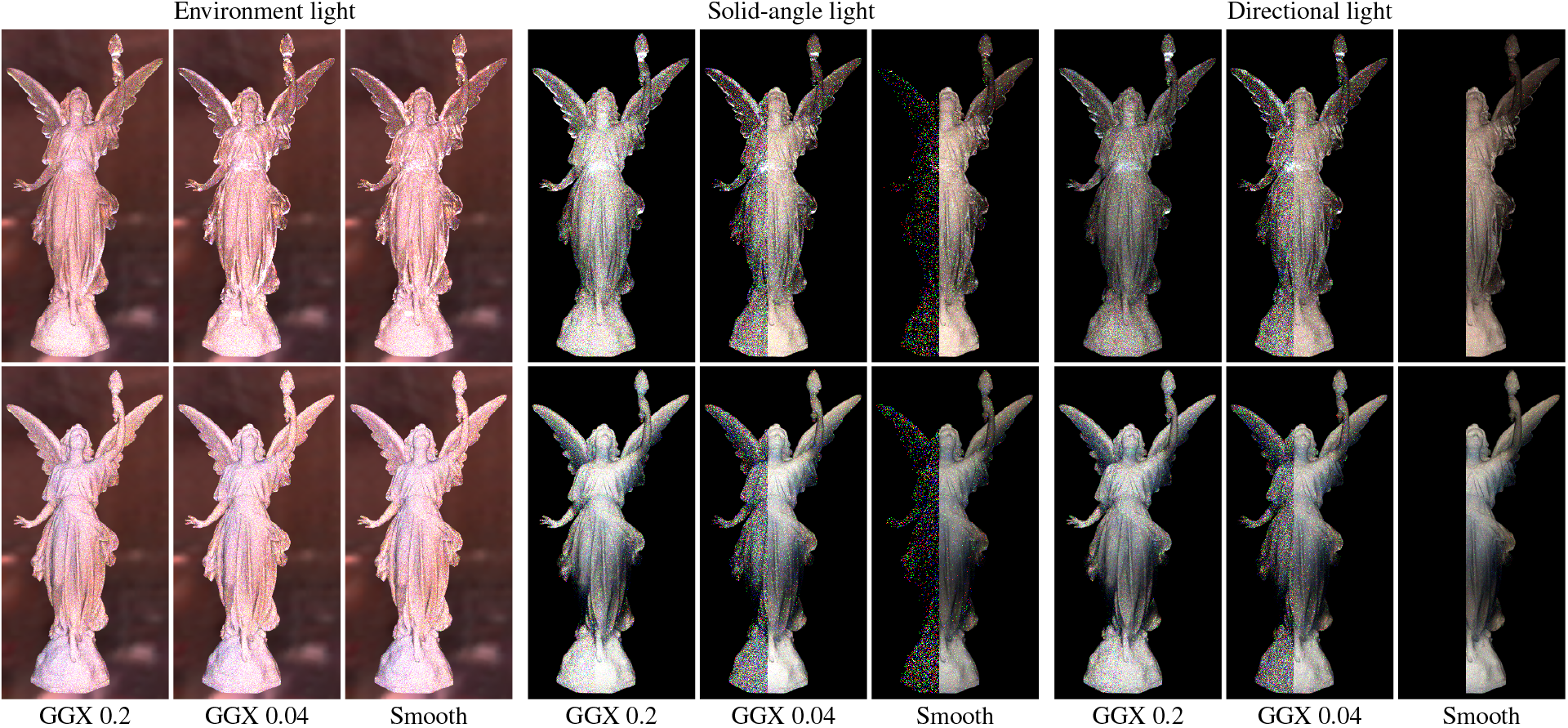Abstract

We present subdivision next-event estimation (SNEE) for unbiased Monte Carlo simulation of subsurface scattering. Our technique is designed to sample high-frequency illumination through geometrically complex interfaces with highly directional scattering lobes enclosing a scattering medium. This case is difficult to sample and a common source of image noise. We explore the idea of exploiting the degree of freedom given by path vertices within the interior medium to find two-bounce connections to the light that satisfy the law of refraction. SNEE first finds a surface point by tracing a probe ray and then performs a subdivision step to place an intermediate vertex within the medium according to the incoming light at the chosen surface point. Our subdivision construction ensures that the path will connect to the light while obeying Fermat’s principle of least time. We discuss the details of our technique and demonstrate the benefits of integrating SNEE into a forward path tracer.
Copyright Notice
The documents contained in these directories are included by the contributing authors as a means to ensure timely dissemination of scholarly and technical work on a non-commercial basis. Copyright and all rights therein are maintained by the authors or by other copyright holders, notwithstanding that they have offered their works here electronically. It is understood that all persons copying this information will adhere to the terms and constraints invoked by each author’s copyright. These works may not be reposted without the explicit permission of the copyright holder.